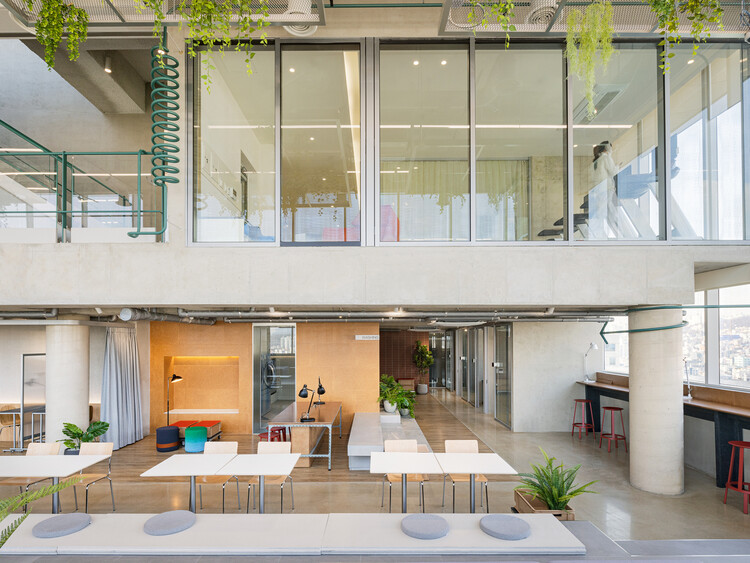As cities grow denser and housing costs soar, traditional living arrangements are becoming increasingly unaffordable for many urban dwellers. In response, co-living spaces have emerged as a revolutionary housing model, blending affordability, community, and convenience. These shared living environments are transforming urban housing by offering flexible, cost-effective, and socially engaging alternatives to conventional apartments. From young professionals to digital nomads, more people are embracing co-living as a solution to the challenges of modern city life.
The Rise of Co-Living
Co-living is not a new concept—communal living has existed for centuries in various forms. However, today’s co-living spaces are designed for the needs of contemporary urbanites, particularly millennials and Gen Z, who prioritize flexibility, networking, and experiences over long-term leases and isolation.
Several factors are driving the popularity of co-living:
- Skyrocketing Rent Prices – In major cities like New York, San Francisco, and London, renting an apartment alone is prohibitively expensive. Co-living provides a more affordable option by splitting costs among residents.
- Urbanization & Housing Shortages – As more people move to cities, housing supply struggles to keep up. Co-living maximizes space efficiency by optimizing shared areas.
- Changing Social Dynamics – Younger generations value community and collaboration over traditional nuclear living arrangements. Co-living fosters connections through shared spaces and organized events.
- Flexibility & Convenience – Many co-living spaces offer short-term leases, furnished rooms, and all-inclusive utilities, appealing to remote workers and frequent movers.
How Co-Living Works
Unlike traditional roommate setups, co-living is a structured, professionally managed housing model. Key features include:
1. Shared Living Spaces
Residents typically have private bedrooms but share kitchens, lounges, and sometimes bathrooms. High-end co-living spaces may also include co-working areas, gyms, and rooftop gardens.
2. All-Inclusive Pricing
Rent often covers utilities, Wi-Fi, cleaning services, and even community events, eliminating hidden costs and simplifying budgeting.
3. Community-Centric Design
Co-living companies intentionally design spaces to encourage interaction—communal dining tables, game rooms, and networking events help residents connect naturally.
4. Flexible Lease Terms
Unlike traditional leases that lock tenants into year-long contracts, co-living often allows month-to-month agreements, catering to freelancers, entrepreneurs, and digital nomads.
Benefits of Co-Living
1. Affordability in Expensive Cities
By sharing common areas and splitting costs, residents can live in prime urban locations at a fraction of the price of a solo apartment.
2. Built-In Social Network
Moving to a new city can be isolating, but co-living provides an instant community. Many spaces host dinners, workshops, and outings to help residents bond.
3. Hassle-Free Living
No need to deal with landlords, furniture shopping, or setting up utilities—co-living operators handle everything, making relocation seamless.
4. Enhanced Work-Life Balance
With remote work on the rise, co-living spaces often include co-working areas, blending living and workspaces in a way that traditional housing doesn’t.
Challenges & Criticisms
While co-living offers many advantages, it’s not without drawbacks:
- Privacy Concerns – Sharing spaces means less personal solitude, which may not suit everyone.
- Noise & Lifestyle Differences – Living with multiple people can lead to conflicts over cleanliness, schedules, and noise levels.
- Corporate-Led Communities – Some criticize co-living for commercializing communal living, making it feel transactional rather than organic.
The Future of Co-Living
As urban populations continue to grow, co-living is poised to expand beyond niche markets. Future trends may include:
- Hybrid Housing Models – Combining co-living with co-working, retail, and wellness spaces in a single building.
- AI & Smart Home Integration – Automated systems for managing shared resources, security, and resident matching.
- Sustainable Co-Living – Eco-friendly designs with shared energy systems, urban farming, and zero-waste initiatives.
Conclusion
Co-living is more than just a trend—it’s a fundamental shift in how people approach urban housing. By addressing affordability, flexibility, and social connectivity, co-living spaces are redefining what it means to live in a city. While not a perfect fit for everyone, their rise signals a growing demand for housing solutions that align with modern lifestyles. As cities evolve, co-living will likely play an even bigger role in shaping the future of urban living, proving that the best way to navigate the challenges of city life might just be doing it together.
Browse these resources for similar content :
https://homeimprovementcarmel.com/
https://mabsnews.com/
https://dunyapaknews.com/
https://kentraveling.com/
https://indihomekeluarga.com/
https://sportsnewsriet.com/
https://kodangnews.com/
https://cloudsnewsnetwork.com/
https://aworkforce.org/
https://floornhome.com/
https://basementlighting.org/
https://newcarreleasenews.com/
https://shaheennewstv.com/
https://almodonnews.com/
https://registercents.com/
https://newsarenas.com/
https://rkvnews.com/
https://keralanewsonline.com/
https://buuhoodlenews.com/
https://homedecorfurnitureandaccessories.com/
https://webtotalfitness.com/
https://tinafashionsaigon.com/
https://floridahealthsite.org/
https://askmeforum.com/
https://theclevelandhomecoming.com/
https://jcarettrealestate.com/
https://idealnewstv.com/
https://univetmedicine.com/
https://muraipokertop.com/
https://newslead.net/










